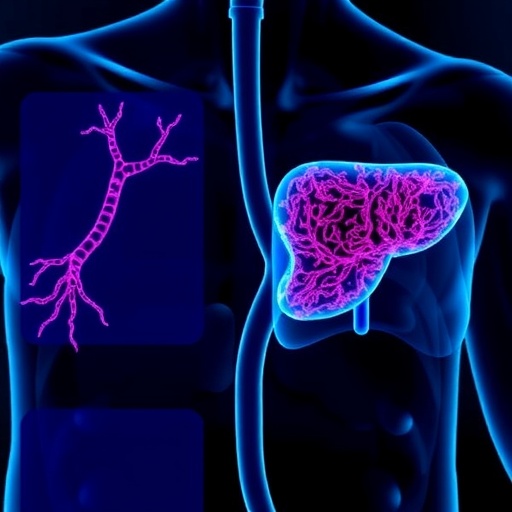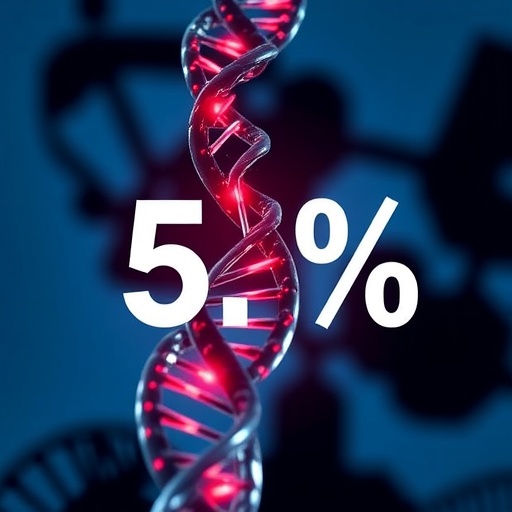In the relentless quest to conquer cancer, precision oncology has emerged as a beacon of hope, aiming to tailor treatments to the unique molecular and cellular landscapes of individual tumors. Yet, this ambition grapples with formidable challenges—tumor heterogeneity, therapeutic resistance, and the elusive tumor immune microenvironment (TME), which often conspires against effective treatment. A pioneering review article by Ruowa Xu, Yunlong Gao, Hailong Zhang, and Zichao Luo sheds new light on a cutting-edge strategy that harnesses the biological power of vitamins embedded within nanoplatforms. This interdisciplinary approach, fusing nanomedicine, immunotherapy, and diagnostic imaging, holds transformative potential to revolutionize cancer therapy by overcoming longstanding obstacles in drug delivery and immune modulation.
At the core of this innovation lies a triple-functional vitamin-integrated nanoplatform designed to synergize three crucial capabilities: enhanced immunotherapy, precision-targeted drug delivery, and integrated diagnostic monitoring. Unlike traditional nanocarriers often hindered by issues like the polyethylene glycol (PEG) dilemma or off-target toxicity, vitamin-derived nanoparticles leverage intrinsic biocompatibility, metabolic activity, and receptor-specific targeting to navigate and modulate the recalcitrant tumor microenvironment. This integration promises to reshape therapeutic outcomes by simultaneously stimulating immune responses, ensuring precise drug delivery to malignant sites, and enabling real-time, non-invasive monitoring of treatment efficacy.
Immunomodulation emerges as a cornerstone of this strategy. Fat-soluble vitamins such as vitamins A, D, E, and K assume pivotal roles in reprogramming immune cell function within the tumor milieu. Vitamin A, through retinoic acid-loaded polymeric nanoparticles, has demonstrated the ability to inhibit pro-tumorigenic M2 macrophage polarization and promote dendritic cell maturation. These immunostimulatory effects facilitate a rebalancing of T-helper cell subsets, fostering an antitumor Th1 response. Importantly, preclinical data reveal that such nanocarriers, when combined with immune checkpoint blockade (anti-PD-L1), produce a compounded reduction in tumor progression and inhibit epithelial-to-mesenchymal transition, a process key to metastasis.
Vitamin D-based nanoplatforms introduce a compelling biomimetic approach, exploiting vitamin D3-functionalization to coat manganese dioxide nanoparticles with neutrophil membranes. This design uniquely engages the cGAS-STING pathway, a pivotal DNA-sensing mechanism that reinvigorates suppressed innate immunity within the tumor environment while crossing the notoriously restrictive blood-brain barrier. The result is a marked extension in survival among glioblastoma models, significantly outstripping improvements offered by conventional chemotherapeutics, underscoring the promise of vitamin D derivatives in treating aggressive brain cancers.
Vitamin E-centered nanocarriers further exemplify the immunotherapeutic potential of vitamins. α-Tocopheryl succinate-loaded liposomes exert strong anti-inflammatory effects by downregulating the NF-κB and STAT3 pathways, key drivers of tumor immune evasion. Such modulation reduces the expression of PD-L1, a critical immune checkpoint molecule, thereby enhancing antigen presentation and cytotoxic T-cell responses. Advanced vitamin E scaffolds designed for mRNA delivery achieve near-complete inhibition of tumor growth in prophylactic cancer models, demonstrating the scalability of vitamin-based delivery platforms in nucleic acid therapies.
The incorporation of vitamin K into metal-organic framework nanoplatforms reveals another dimension of immune activation. For example, VK3@Co–Fc complexes initiate immunogenic cell death via redox cycling mechanisms, significantly increasing infiltration of cytotoxic CD8⁺ T cells and markedly reducing metastatic burden in breast cancer models. These findings illuminate vitamin K’s underexplored role as a powerful immunomodulatory agent capable of transforming the immunological landscape within tumors.
Water-soluble vitamins are equally instrumental in this evolving therapeutic schema. Folate-targeted nanogels encapsulating siRNA harness the differential expression of the folate receptor alpha (FRα) in cancer cells to achieve enhanced gene silencing of vascular endothelial growth factor (VEGF), a driver of tumor angiogenesis, thus remodeling the tumor microenvironment. Similarly, vitamin B3 (niacin) engages GPR109A receptors to suppress immunosuppressive myeloid populations and augment cytotoxic T-lymphocyte activity, revealing the immunometabolic intersections that vitamin derivatives can exploit.
Vitamin C’s capacity to target cancer stem cells is realized through its conjugation to gold nanoparticles, enhancing selective cytotoxicity. Moreover, combinatorial liposomal formulations of vitamin C with indocyanine green induce polarization shift from tumor-supportive M2 macrophages to pro-inflammatory M1 phenotypes, a critical pivot in reversing immune suppression. In bladder cancer models, this approach demonstrates an impressive ~90% tumor growth inhibition when integrated with anti-PD-L1 therapy, showcasing potent synergism between vitamin-derived immunomodulation and checkpoint blockade.
Beyond immunotherapy, vitamin-integrated nanoplatforms tackle the formidable pharmacological barriers that have historically limited anticancer agents’ efficacy. Nanoencapsulation techniques leverage lipidic and polymeric carriers to improve vitamin bioavailability, control release kinetics, and minimize off-target toxicities. For instance, liposomal all-trans retinoic acid circumvents rapid hepatic metabolism, enhancing systemic exposure and tolerability in clinical settings. Concurrently, vitamins function as structural elements and targeting moieties. Folate and vitamin B12 derivatives enable receptor-mediated endocytosis, improving cellular uptake with high specificity, while vitamin E-derived TPGS acts as both a surfactant and multidrug resistance modulator, drastically elevating intracellular concentrations of agents like paclitaxel in resistant cancer phenotypes.
The therapeutic impact is amplified by co-delivery strategies. Vitamin B2-based ferric chloride nanocomplexes serve as sonosensitizers, generating reactive oxygen species (ROS) upon ultrasound activation. When combined with metformin, these platforms achieve substantial tumor suppression in triple-negative breast cancer, a particularly aggressive and treatment-resistant subtype. Such multifunctional designs underscore the versatility and adaptability of vitamin-integrated nanomedicine.
An essential frontier lies in the seamless incorporation of diagnostics with therapy—the theranostic paradigm. Vitamin-targeted near-infrared probes enable ultra-sensitive detection of FRα-positive tumors, achieving remarkably high tumor-to-normal tissue contrast ratios critical for early intervention. Iodinated nanoemulsions with vitamin E cores facilitate persistent high-contrast micro-CT imaging, sustaining visualization over months. Multifunctional constructs like TPGS-coated upconversion nanoparticles co-delivering chemotherapeutics and imaging agents provide real-time, fluorescence resonance energy transfer-based monitoring of drug release, enabling precise dosing adjustments and improved treatment responsiveness, particularly in multidrug resistant cancers.
However, translating these exciting preclinical advances into clinical practice remains fraught with challenges. Key concerns revolve around long-term biocompatibility and potential organ accumulation, such as hepatic sequestration of inorganic nanoparticles, that could precipitate unforeseen toxicities or immune dysregulation. The complexity of scalable manufacturing methods, including microfluidics-based encapsulation, demands rigorous standardization to ensure batch consistency and regulatory compliance. Additionally, heterogeneous vitamin receptor expression across diverse tumor types underscores the necessity for robust patient stratification protocols or multiplexed targeting strategies to optimize efficacy and minimize off-target effects.
Looking forward, the integration of artificial intelligence (AI) and multi-omics technologies is poised to accelerate the rational design of vitamin-based nanocarriers and enable personalized treatment regimens. The convergence of nutrient biology with nano-immunoengineering heralds a new era in oncology, where patients receive precision-tailored interventions that harness the full immunobiological potential of vitamins. Emerging modalities such as chimeric antigen receptor T-cells (CAR-T) and oncolytic viruses could synergize with these platforms, enhancing therapeutic depth and durability.
This comprehensive review underscores that by reimagining vitamins not merely as dietary supplements but as molecular architects of nanotherapeutics, researchers can unlock unprecedented avenues to surmount the complexity of cancer. The paradigm of vitamin-engineered nanoplatforms signals a paradigm shift toward holistic, “see-and-treat” oncology solutions that integrate cutting-edge immunotherapy, optimized drug delivery, and robust diagnostic capabilities. As Dr. Zichao Luo emphasizes, bridging nutrient science with precision medicine through these innovative nanotechnologies presents a transformative frontier—one whose clinical realization could significantly improve outcomes and quality of life for cancer patients worldwide.
Subject of Research: Vitamin-Engineered Nanoplatforms for Precision Oncology Integrating Immunotherapy, Drug Delivery Systems, and Theranostics
Article Title: Vitamin‐Engineered Nanoplatforms in Precision Oncology: Integrating Immunotherapy, Delivery Systems, and Theranostics
News Publication Date: 15-Oct-2025
Web References: http://dx.doi.org/10.1002/mba2.70028
Image Credits: Hailong Zhang and Zichao Luo
Keywords: precision oncology, vitamin-derived nanoplatforms, immunotherapy, drug delivery, theranostics, tumor microenvironment, nanoparticle targeting, vitamin A, vitamin D, vitamin E, vitamin K, vitamin B complex, vitamin C, nano-immunoengineering
Tags: biocompatible nanoparticlescancer treatment personalizationimmunotherapy innovationsintegrated cancer therapiesnanomedicine applications in oncologyovercoming therapeutic resistanceprecision oncology advancementsreal-time cancer monitoringtargeted drug delivery systemstheranostic strategies in cancertumor microenvironment challengesvitamin-engineered nanoplatforms





